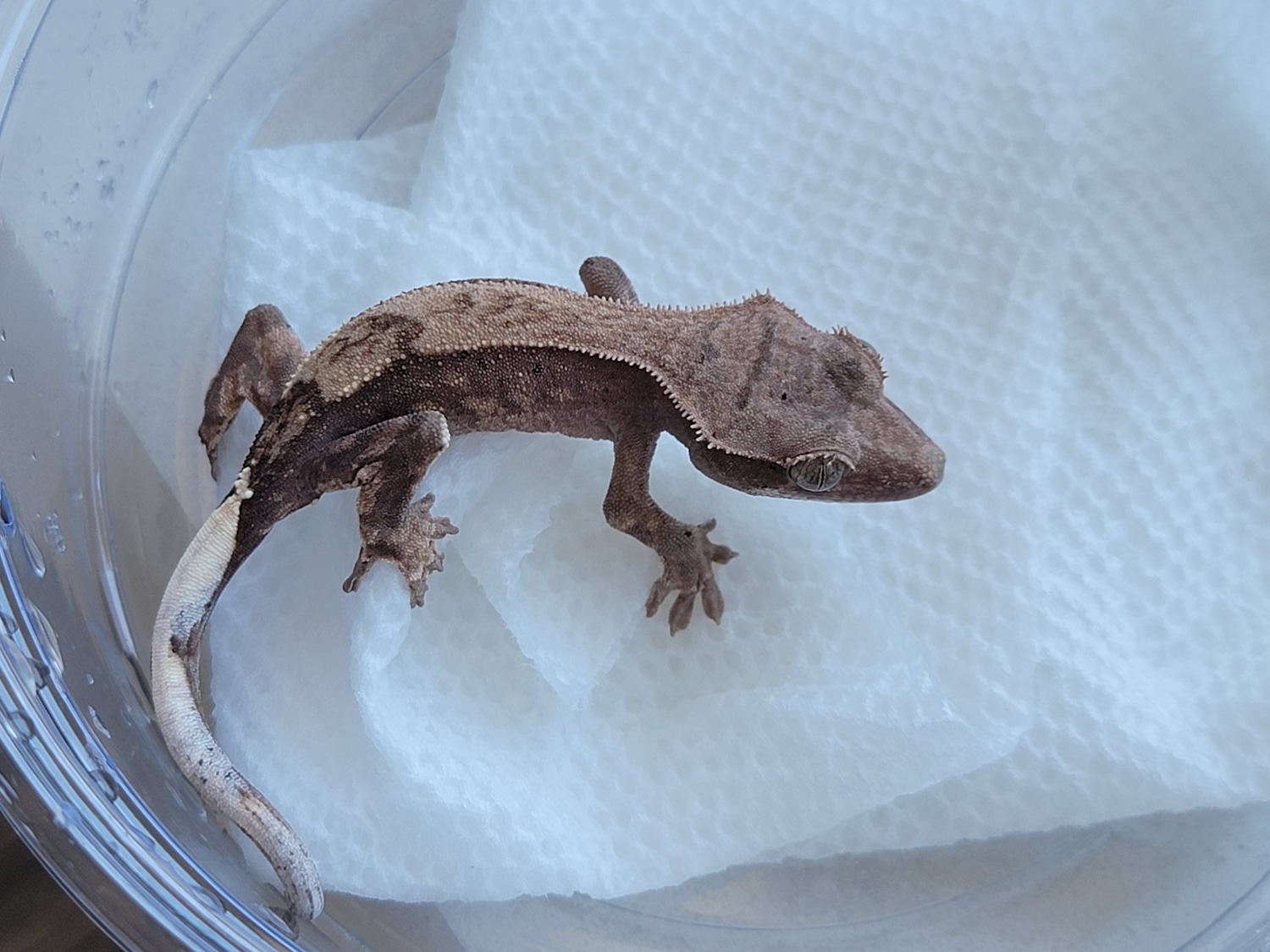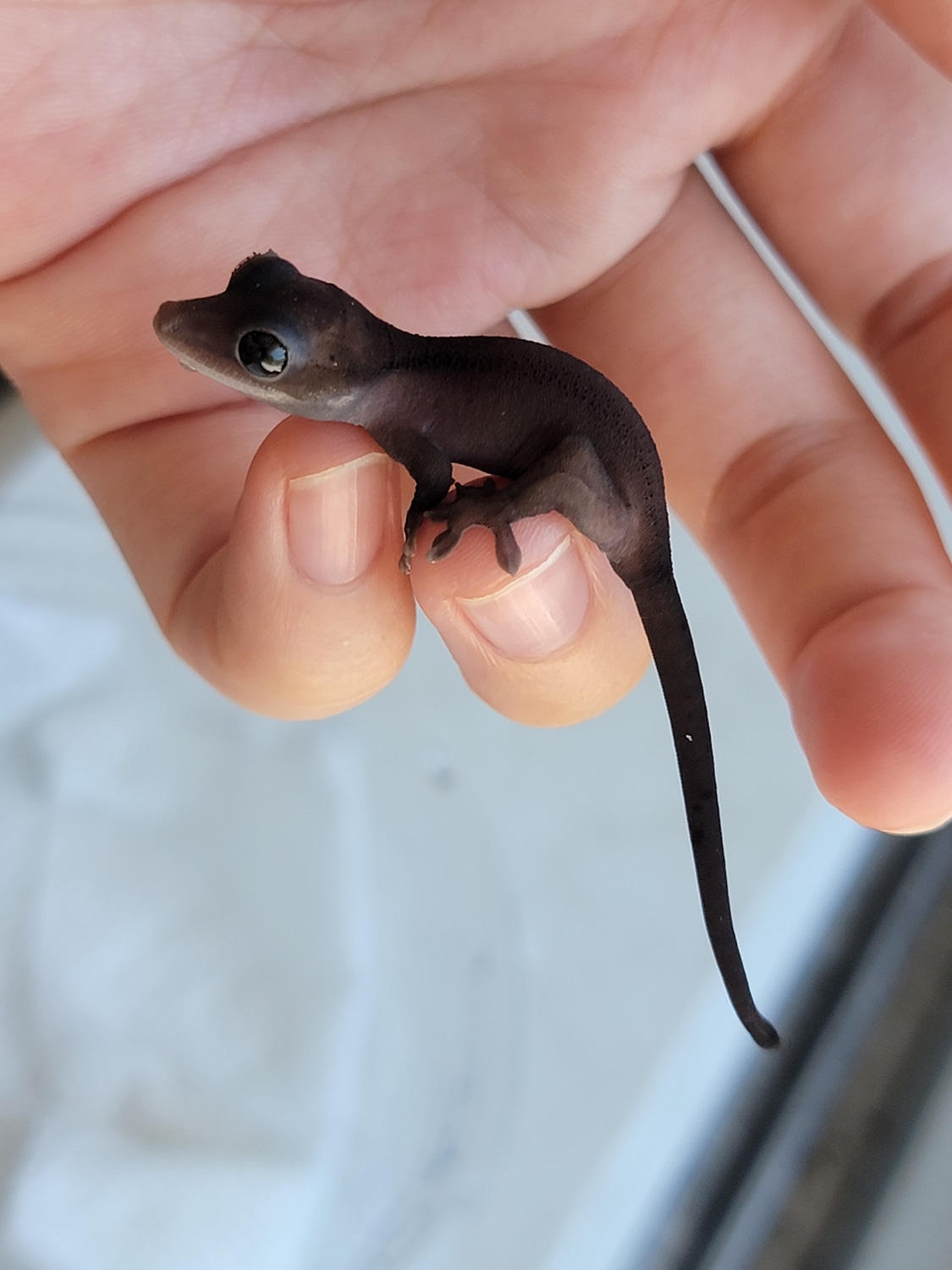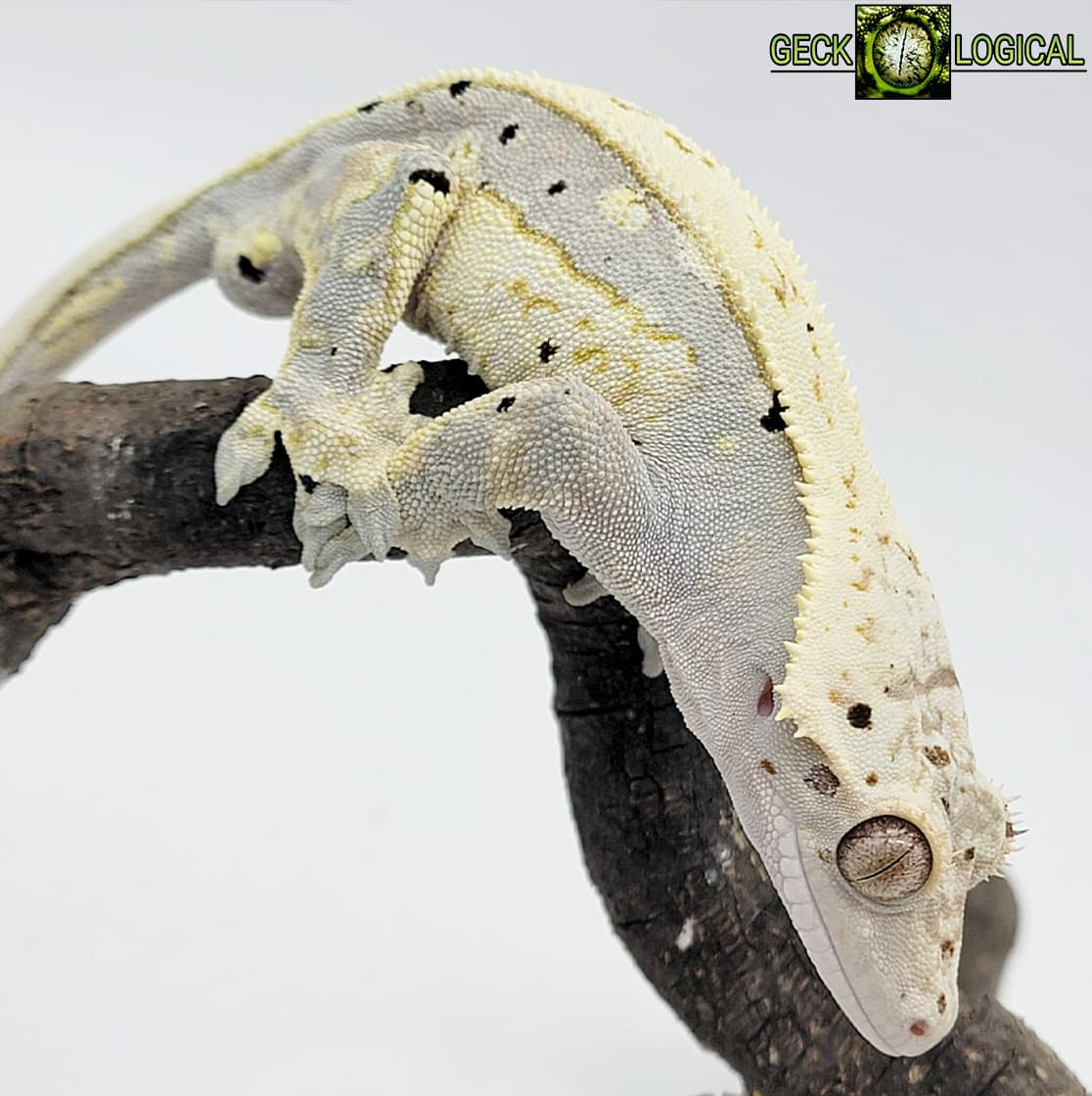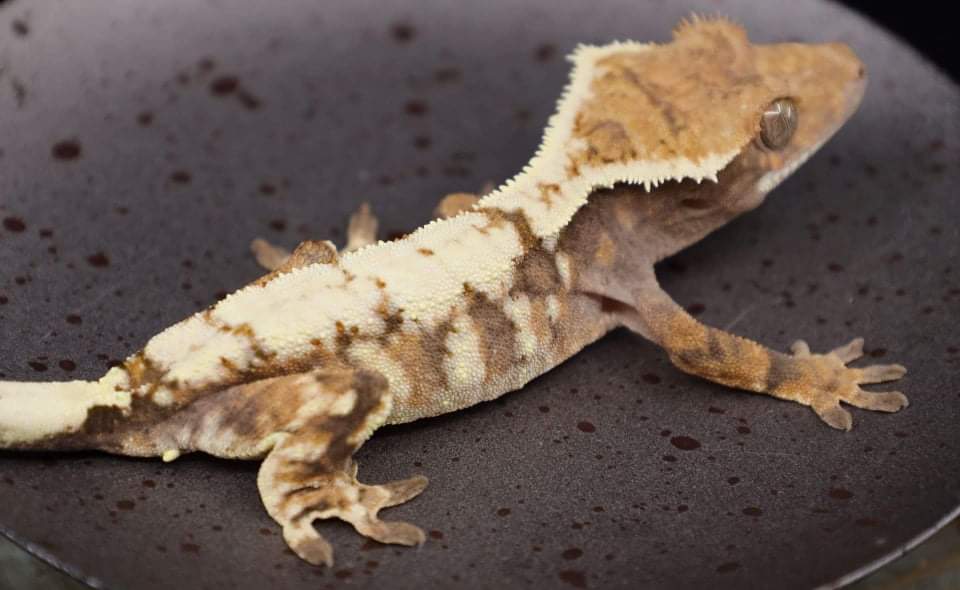Cappuccino
Type: Incomplete Dominant
First Produced By: Reptile City Korea
Aliases: Melanistic, C
Issues: Super has Reduced Nostril Size, Spectacle Eye
First Produced In: 2020
Availability: Average
Last Updated: 2024-05-16
Do you have any suggestions or corrections for this article?
Click here to contribute feedback
Issues
Reduced Nostril Size
One characteristic that has been noticed with the Super Cappuccino is reduced nostril size. While some animals have presented with no nostril openings at all. It appears to be a thin skin membrane that has caused the nostril to not completely form. This is usually found in animals with shorter snouts. [6]
Spectacle Eye
Another issue found with animals that have the snout issue is spectacle eye. For those unfamiliar with this condition, it effects several crested geckos in the community and other reptiles, not just super cappuccino and is something that although has a treatment may be a life-long issue. Spectacle eye is not a genetic condition but rather a symptom that can occur due to how the tear duct forms or becomes obstructed. This causes fluid to build between the eye and scale that surrounds the eye. This scale is something we recognize as the eye cap when an animal sheds its skin. The fluid that builds up are tears that usually drain into the nasal cavity. Not all Super Cappuccino with reduced nostrils have spectacle eye but it does seem to be more common.
Currently, all lines of cappuccino, Korea, US, and UK animals, have been found to have reduced nostrils. This only affects supers or Hzg Cappuccino, not Cappuccino nor Cappuccino combo morphs.[7]
History
Cappuccinos were first identified in 2020 by Reptile City Korea by breeding two Cappuccinos together, which resulted in the world’s first melanistic crested gecko. Since that time Cappuccinos have also been bred to Lilly Whites creating Frappuccinos (Cappuccino x Lilly White). [1]
Donald Hendrickson: “We began our cappuccinos project while attempting to identify and prove out geckos that possibly carried the axanthic gene. We have never purchased or bred axanthics, but over the years we have produced geckos that were very similar in appearance. Because our main business is supplying geckos, to pet stores, we have never bred for any specific trait other than reds and quads. For this reason these “axanthic like” geckos were produced and outcrossed, but never bred together. In fact, we now know that the gene has been outcrossed in our colony for several generation, thus resulting in a very diverse gene pool. In addition to being outcrossed to various phenotypes, we also unknowingly added the phantom gene. These original geckos had the appearance to what are recently referred to as charcoals. In fact, they looked so much like charcoals that for my in house records I just labeled them as such, although we have never bought or bred charcoals. Of course, we now know that, like the charcoals, they are simply dark phantoms, which is a simple
recessive gene. Without even knowing it we produced the first Capp combo, the Cappuccino Phantom. When we decided to attempt to prove the “axanthic type” we coined the term cappuccino. We actually set up several groups and separated them even further by identifying them as Capp light (possible hypos) and Capp dark and charcoal, which is now identified as dark phantom cappuccinos”.
Read more → [2]
Appearance
Head
Melanistic/translucent is an all grey/black gecko with black eyes.
Body
Identification and color changes in all 3 are varied, and like most crested geckos, can be rather drastic. For Cappuccinos, as a general rule, adult colors tend to blend and fade from their baby colors, with most losing all of their dorsal pattern. Pinstripes will widen and spread with the dorsal on many Capps and can be found in both yellow and white. There tends to be mostly grey and black or dark brown base colors. That is most likely due to the originating geckos colors. With continued outcrossing, the dark color as a marker has not held true. We have other base colors now. Many of the dark Capps, and Phantom Capps, also have tongues that can be near black, but their tongues do change color from dark to light rather quickly. Identification of the baby Capps is actually quite easy with high expression animals. The base of the tail is a brighter, sharper white color, and the end of the tail is typically very dark with little to no pattern. Of course, like Lillies, high expression animals are much easier to identify than those with low expression. When in doubt, we simply hold the animal back, until either the growth reveals the gene, or in some cases, like with Phantom Capps, we can prove them out by producing mels.[3]
Change in pattern and coloration. Breeding two Cappuccinos together will produce a melanistic/translucent crested gecko.
Cappuccino can be distinguished by their white tail base and different patterning.
Tail
Y at base of tail, spotted or muted markings along bottom of spine. [4]
Controversy
Super Cappuccinos are not supported for sale on MorphMarket at this time.
Has been referred to as Mel, Melanistic, or Translucent, however Super Cappuccino is more consistent with other naming conventions used in the reptile community.
There is still a lot of work to be done with the Cappuccino gene, including outbreeding to various phenotypes and genes. Since we have already produced combo morphs with Capp, Lilly and Phantom genes, that still leaves the Axanthic gene, and the genes that make up the designer morphs. I know some guys who have already started down that road, but I have opted to keep the Axanthic gene out of my colony to help with clarity of our existing projects. We have also not added Charcoals to our stock, because we already have the Phantom gene, and will produce our own line of black Phantoms and black Phantom Cappuccinos. Because we had released Cappuccinos before we realized what it was, and had to go public with the project before all the questions were answered, it has left a void that has been filled with rumors. Some of these rumors are rather bizarre and totally off base. Below are a few rumors that I have heard thus far…
RUMOR - Melanistics are not able to escape the egg and must be cut out.
UNTRUE - as these two will attest. I also have a video on Instagram of a Mel hatching. Other than the first baby, I have only had one other baby drown and dozens successfully hatch on their own.
RUMOR - Melanistics are all females
UNTRUE - Not sure who started this one, but I will say that I am slightly heavier in males than females at this point. I will however note that because the skin is so fine it is much more difficult to see pores and several of my males were still thought to be female at 8 or 9 grams.
RUMOR - (I will lump these two together)… Mels were produced from a genetics lab -OR- are crested and sarasinorum hybrids.
UNTRUE - I am not smart enough to produce one in a lab and I am not stupid enough to produce one by hybridizing and trying to pass it off as something new.
RUMOR - Melanistics are infertile.
NOT SURE - I am not to the point of even attempting a melanistic breeding yet, although we should have an answer to this question early next year. It is of course a possibility and if this turns out to be the case, then we obviously will put it out there. We have seen no fertility problems and no defects or neurological problems with any of our Cappuccinos. I believe that this may, in part, be due to us outbreeding them for several generations. In conclusion, we as breeders, do not have control over how various genes present themselves or interact with others. In all her glory, Mother Nature decides these things and all we can do is learn as we go. We hope that with the emergence of several different genes in recent years, that the future remains bright for all who enjoy working with crested geckos as much as we do. For those with questions, or who may wish to share information, you can DM me on Instagram @city.reptile . [5]
Proven Lines
Extreme Cresties Line
Related Traits
GENOTYPE: C
Not allelic with any other known traits. [8]
Combos
Sorak (Super Cappuccino Lilly White)
The Sorak (super cappuccino lilly white combo) appears to also have reduced nostril size and suffer from the same condition as some super cappuccino.
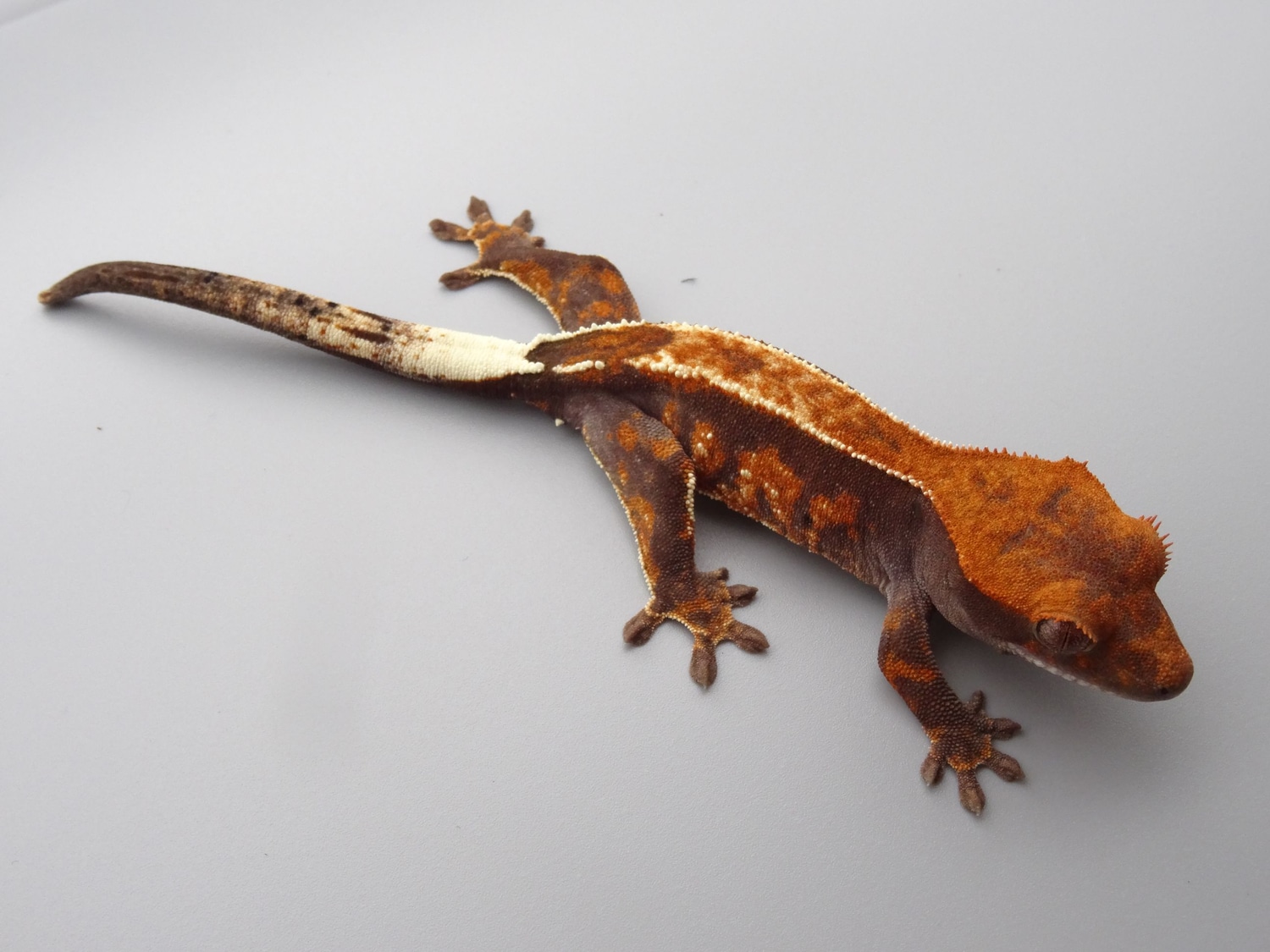
Cappuchino - Harlequin Pinstripe Crested Gecko by ExtremeCresties
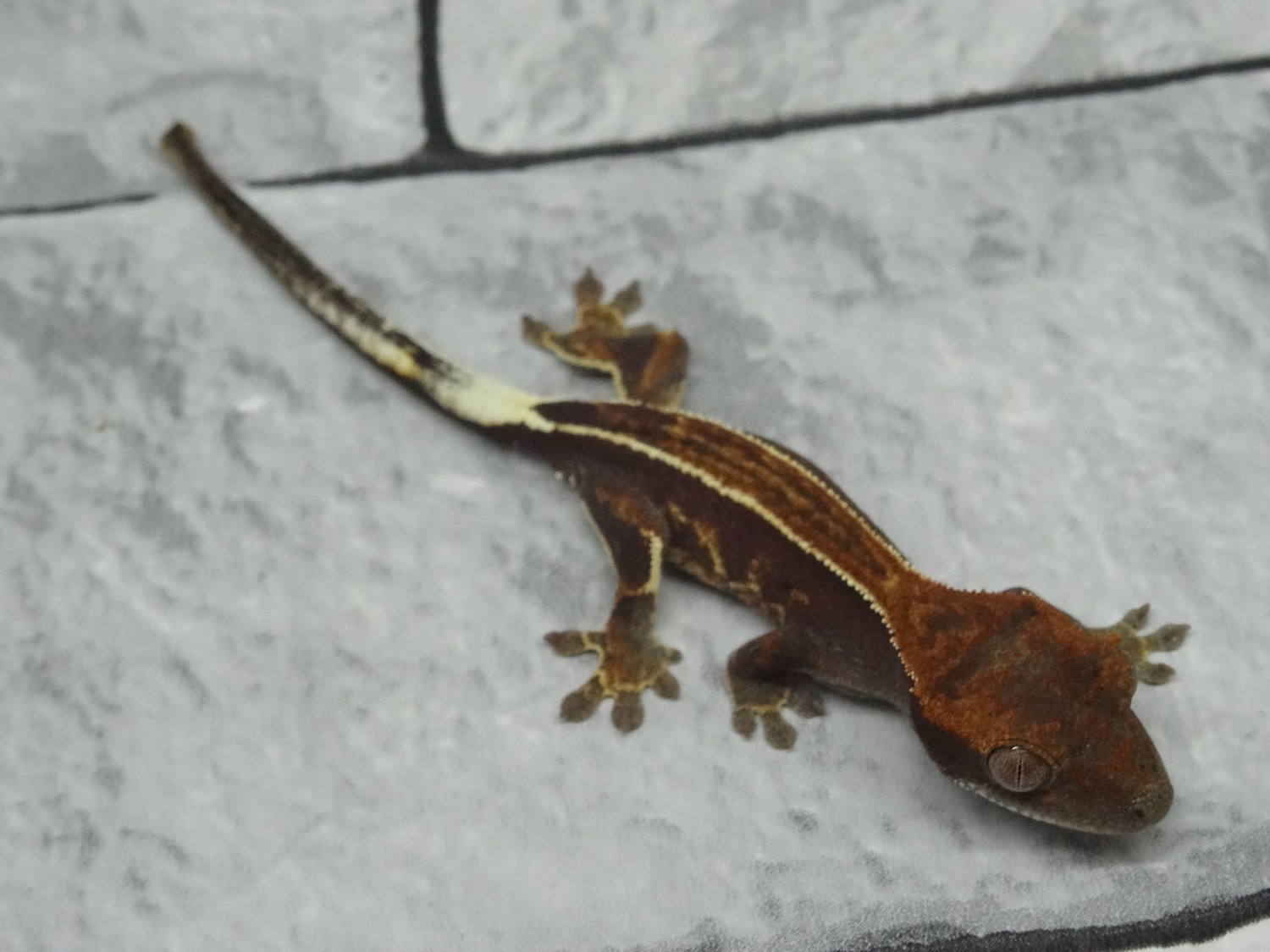
Cappucino, Pinstripe Crested Gecko by ExtremeCresties

Frappuccino From Firetruck Red Female Crested Gecko by Specialty Herps

Frappuccino Poss Het Axanthic Crested Gecko by Specialty Herps
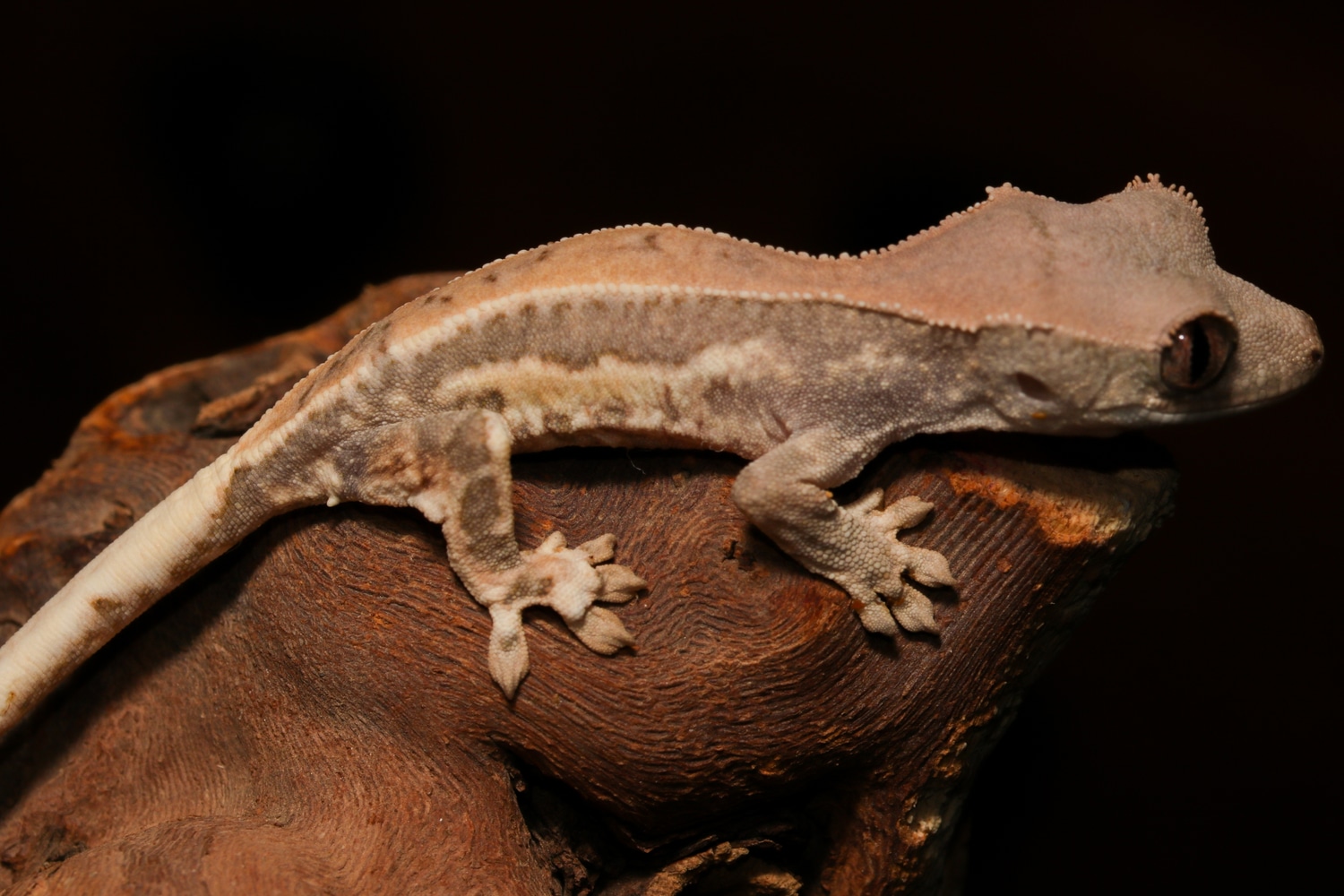
Frappuccino Poss Het Axanthic Crested Gecko by Specialty Herps2
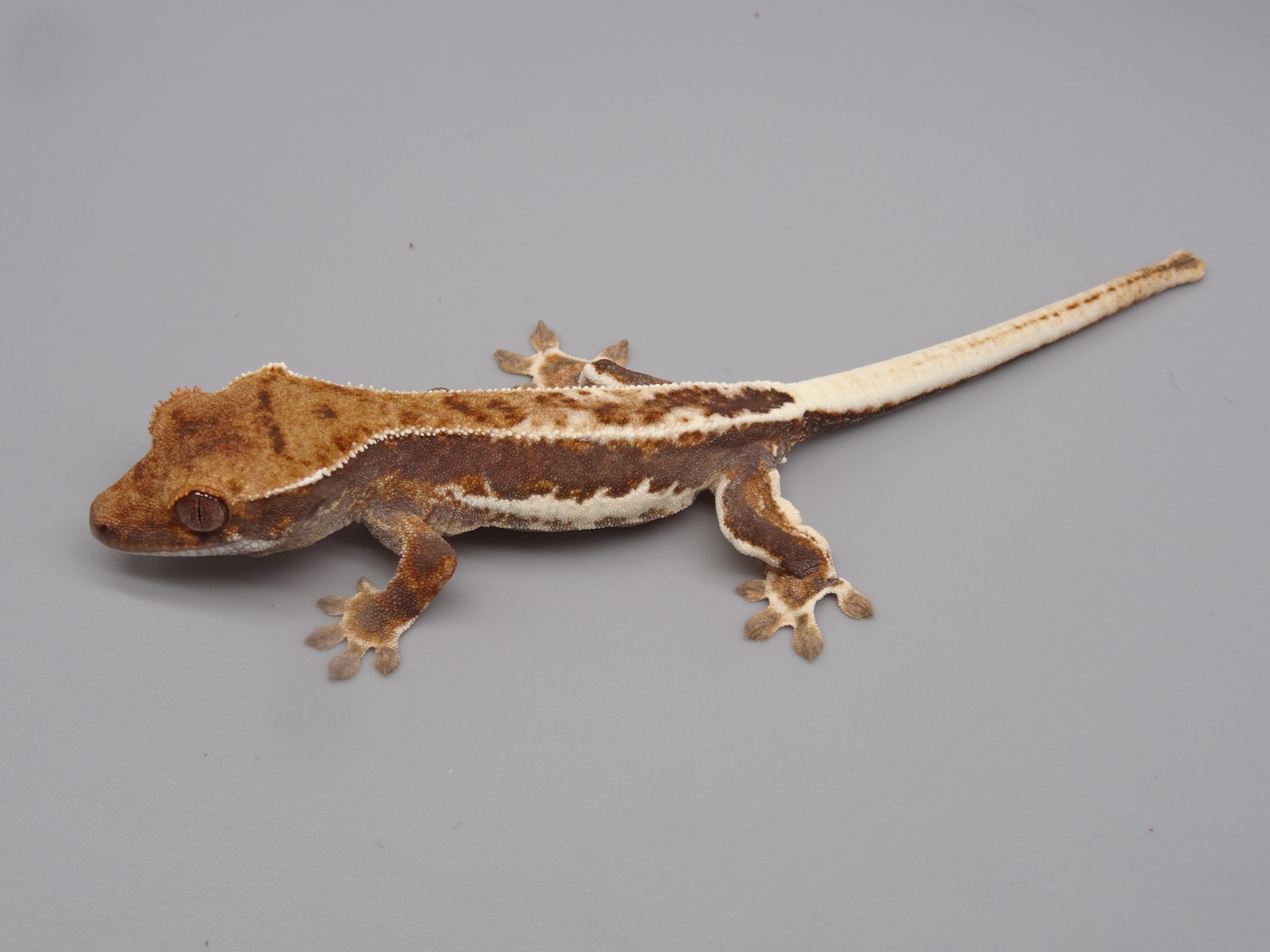
Frappuccino, Harlequin Pinstripe Crested Gecko by ExtremeCresties


